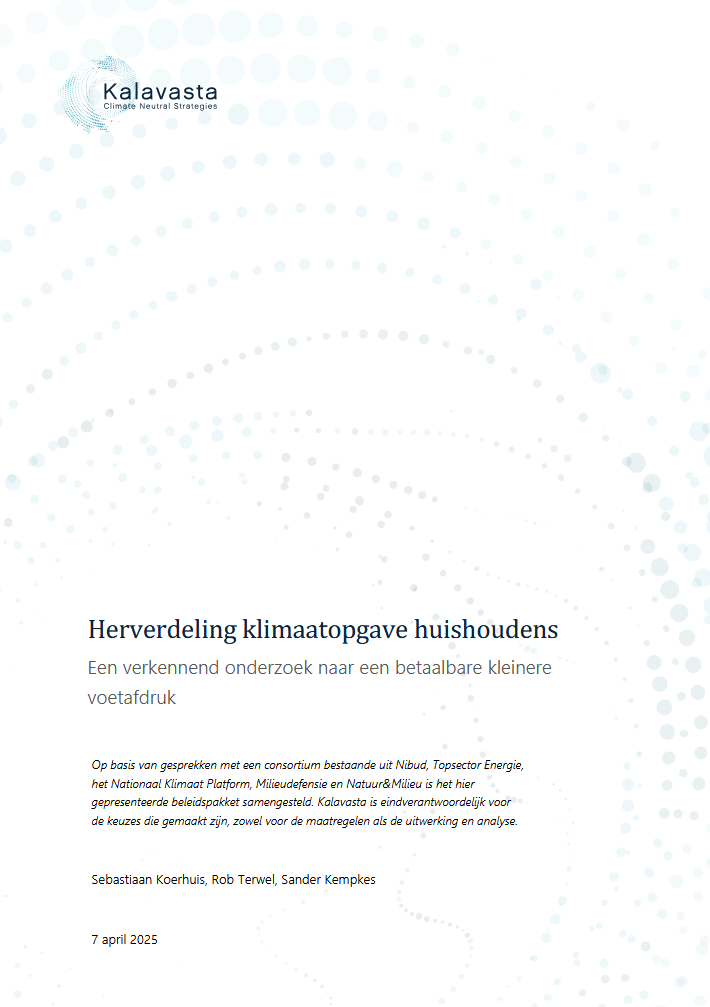Redistributing the climate challenge for households


The Netherlands' 2030 climate goals are almost certainly unattainable with current proposed policies (March, 2025). Households are also expected to contribute to these goals. Within the public debate, an explicit analysis of the effects of climate policy on households in different income groups is missing. Using the Policy Transition Model https://beleidtransitiemodel.nl/, this study aims to create an additional policy package that explores how the 2030 climate goals for households can be achieved in a fair and (relatively) more affordable way for low-income households. Explicit attention is given to the financial impact of policy measures on househould across different income groups. The package focuses on the homes- and transport used by households.
The analysis shows that a redistribution of financial burdens across income groups is more feasible for the energy costs of housing than for transport. For housing, financial burdens can shift from low/middle-income groups to higher-income groups through a proposed progressive energy taxation. Transport can become more affordable for almost all housholds, but it becomes unavoidable that higher-income groups experience the most financial gain due to greater (electric) vehicle ownership. For transportation, decreasing the amount of kilometers people want to drive by improving accessibility and investing less in road expansions emerged as the most impactful and affordable solution for achieving emission reduction with a slowly electrifying fleet.
Low-income groups benefit most from housing measures (saving ~€80 annually) while high-income groups bear increased costs (up to €380/year for the highest decile). For transportation, all groups see benefits, but high-income households gain significantly more (€80-170 annually). The sum total of additional measures results in relative financial improvement for 90% of households (€100-€0 annually), where only the highest income households (final 10%) have an increased financial burden (€210 anually). Estimated costs for governmental spending neither increase or decrease as a result of the additional policy package.
Several vulnerable groups require special attention due to the additional policy package: low-income households with high energy consumption and rural low-income households dependent on cars. The size of both groups have been estimated and the report recommends to provide targeted support for these groups.